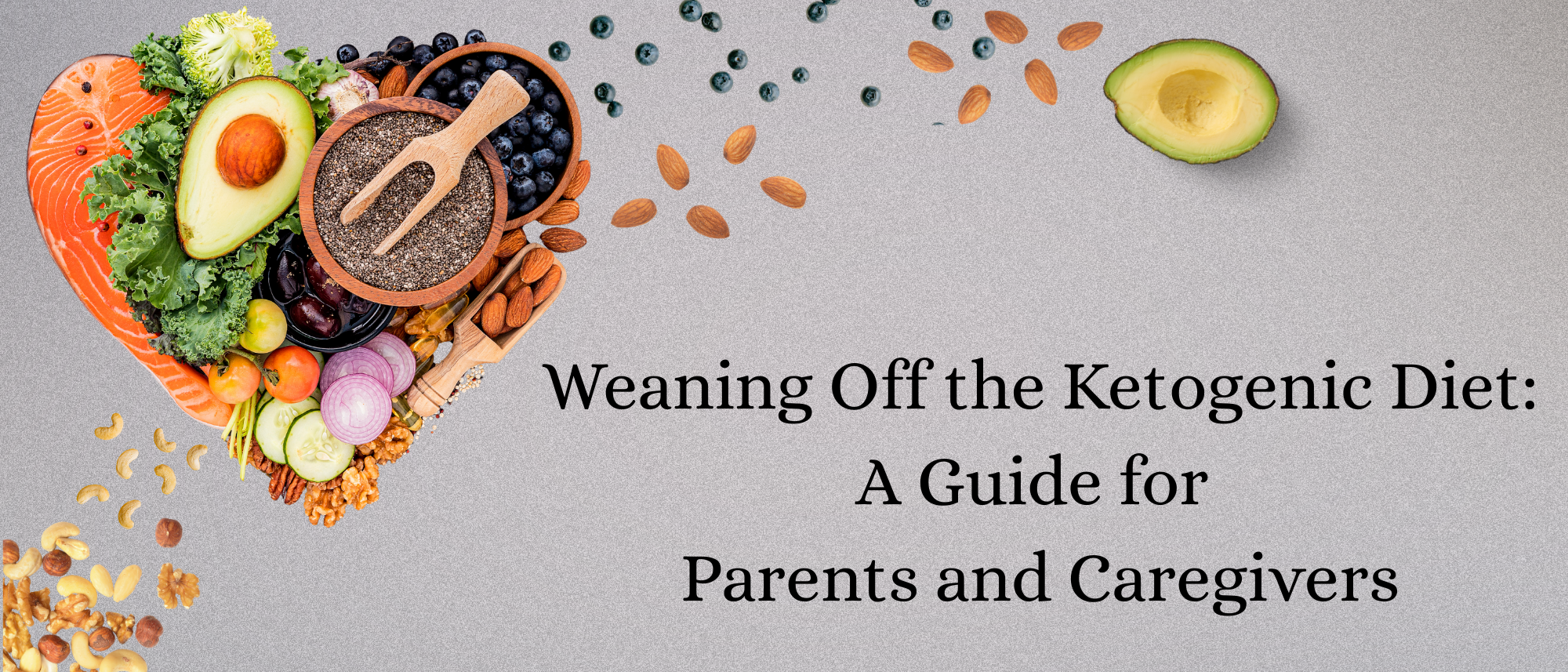Breaking Down the Macros: Analyzing the Nutritional Content of Keto Yogurt
/Recipe & Content Contributor: Taylor Parrish, RDN, CLC, LD
In the US alone, there are over 100 yogurt production businesses. When it comes to the world of yogurts, you’ve got options… flavors, textures, ingredients, and nutritional content are all areas where yogurts can differ! All of these options and differences can make it difficult to determine the best keto yogurt. When following a ketogenic diet, macros matter so how do we determine which yogurt to choose?
Do all yogurts contain probiotics?
Most (not all) yogurts contain probiotics but keep in mind that the good bacteria in yogurt must be alive at high enough levels to provide a potential health benefit. Some yogurt products are heat-treated after the culturing process, which damages or destroys the microbes.
Traditional bacterial strains used to make yogurt are Streptococcus thermophilus and Lactobacillus bulgaricus. In addition to these two strains of bacteria, some yogurts have added additional bacteria strains to help support gut health such as Lactobacillus and Bifidobacterium. Keep in mind that added probiotics may cause the flavor to be more sour.
Common Types of Yogurt Used in Keto
Standard yogurt, just like cow’s milk, standard yogurt contains carbohydrates from the milk sugar “lactose” but often a lot of added sugar is present as well.
Greek yogurt contains a lower amount of carbohydrates and a higher amount of protein than standard yogurt. The fat content of Greek yogurt typically maxes out at 5% milk fat. Greek yogurt (if eaten plain and unsweetened) can have a slightly sour taste and is very thick. Think sour cream but more protein and less fat.
Coconut/almond yogurt is made with coconut and almond milk instead of cow’s milk. They check the box for plant-based options that can be beneficial for those with a dairy allergy/intolerance. Keep in mind that nut-based yogurts may not naturally have calcium or probiotics so be sure to buy a brand that adds these two components. In general, nut-based yogurts contain more calories, less protein and carbohydrates, and significantly more fat compared to cow ’s-based yogurt.
Note: Always keep in mind that nutritional information varies widely between different yogurts. Always read the label closely.
Onto flavoring, there are natural flavors, added sugar, added fruit, added candy/cookies (mix-ins), artificial sweeteners, and extracts all with the goal of creating more flavor – sweetness being one of those. Since carbohydrates are limited on a ketogenic diet, the yogurts that typically work best would be the ones utilizing artificial sweeteners or the plain, unsweetened versions. With plain, unsweetened, there’s always the option to add your own sweetener of choice, and/or natural ways of sweetening/altering the flavor.
Topping ideas to increase fat and add some texture:
Unsweetened Coconut Flakes
Nuts: Pecans & Macadamia
Keto Granola (NuTrail, for example)
Peanut Butter Mousse
Chocolate Chips: Lily’s or Choc Zero
Kids like mix-ins, so being able to add something to break up the thicker mouthfeel will help with acceptance. The coconut yogurts will be higher in fat and lower in protein so are easier to incorporate mix-ins without adding more fat.
Flavoring ideas:
Choc Zero or Walden Farms Syrups
Extracts: Maple, Vanilla, Almond
Sweetener Drops: Stevia or Monk Fruit (usually 2-3 is more than enough)
We dug into 6 “keto-marketed yogurts” that might be available in your area and determine if;
1.) Are they truly suitable for a ketogenic diet?
2.) Can we alter them to make them higher in fat?
We focused on a variety of different yogurts- some milk-based while others are nut-based (coconut and almond). We used coconut oil to add fat as well as pure vanilla extract and liquid Stevia to add some sweetness. We did some taste testing by adding strawberries and pecans.
Culina Plain and Simple
Creamy, light but thick
Very mild taste – no sour taste
Does not taste “tropical”
For 50 g serving, 1-2 drops of Stevia is enough
High fat at a 5.75:1 ratio so it is easy to add carb/protein source to lower the ratio (a rare find)
Great yogurt option that isn’t super high in protein like most keto yogurts
This needs mixed – some harder areas with some thinner liquid underneath – kind of like coconut cream but lighter and less fat-tasting
Dairy-free option
Creating a 1:1 ratio: 50 grams yogurt, 97 grams strawberries (95 calories, 7 grams fat, 1.5 grams protein, 6 grams net carbs)
Creating a 2:1 ratio: 50 grams yogurt 37 grams strawberries (78 calories, 7 grams fat, 1 gram protein, 2.5 grams net carbs)
Creating a 3:1 ratio: 50 grams yogurt, 18 grams strawberries (73 calories, 7 grams fat, 1 gram protein, 1.5 grams net carbs)
Silk Unsweetened Vanilla Almond Milk
Watery, thin, and mild flavor
As a yogurt, it would need to be thickened with add-ins
May be a great option for keto baking as a substitute for regular yogurt
Brownish hue color
Dairy-free option
Unaltered = 1.5:1 ketogenic ratio
Creating a 2:1 ratio: 50 grams yogurt, 16 grams strawberries, 3.5 grams coconut oil (88 calories, 8 grams fat, 2 grams protein, 2 grams net carbs)
Creating a 3:1 ratio: 50 grams yogurt, 15 grams strawberries, 7 grams coconut oil (120 calories, 11.5 grams fat, 2 grams protein, 2 grams net carbs)
Two Good Strawberry
All flavors have 2 grams net carbs
Thicker yogurt similar to that of Greek yogurt
Lower in fat & higher in protein
Absorbs coconut oil well
Uses Stevia to sweeten – slightly less sweet compared to the Ratio brand but more artificial-tasting
Unaltered = 0.13:1 ratio
Creating a 1:1 ratio: 50 grams yogurt, 2.5 grams coconut oil (90 calories, 7 grams fat, 4.5 grams protein, 2 grams net carbs)
Creating a 2:1 ratio: 50 grams yogurt, 18 grams strawberries, 5 grams pecans, 9.5 grams coconut oil (150 calories, 14 grams fat, 4.5 grams protein, 2 grams net carbs)
Creating a 3:1 ratio: 50 grams yogurt, 10 grams strawberries, 7 grams pecan, 14 grams coconut oil (205 calories, 20 grams fat, 5 grams protein, 2 gram net carbs)
Ratio Keto Strawberry
All of the keto flavors have the same macros
Cultured dairy product with added probiotics
Very sweet - uses Sucralose as the sweetener and beet juice as coloring agent
Pinkest color compared to the other artificially flavored strawberry yogurts tested
It has added liquid fat, so the texture is the closest to a typical yogurt (not Greek)
Coconut oil whipped in well
Unaltered = 0.88:1 ratio
Creating a 2:1 ratio: 50 grams yogurt, 15 grams strawberries, 4 grams pecans, 6.5 grams coconut oil (160 calories, 14.5 grams fat, 5.5 grams protein, 2 grams net carbs)
Creating a 3:1 ratio: 50 grams yogurt, 6 grams strawberries, 4 grams pecan, 12 grams coconut oil (205 calories, 20 grams fat, 5.5 grams protein, 1 gram net carbs)
Carb Master Strawberry (Kroger Brand)
Cultured dairy product, uses some actual fruit for flavor as well as sucralose
Macros vary between flavors
Best mouthfeel compared to other yogurts
Tastes more artificial compared to other yogurts
It is thinner in texture, but a smaller amount of liquid fat added could still work
This yogurt does have a few little bits of fruit within the container
Unaltered = 0.12 ketogenic ratio
Creating a 1:1 ratio: 50 grams yogurt, 35 grams strawberries, 5 grams pecan, 3 grams coconut oil (96 calories, 7.5 grams fat, 4 grams protein, 3.5 grams net carbs)
Creating a 2:1 ratio: 50 grams yogurt, 18 grams strawberries, 5 grams pecans, 8 grams coconut oil (136 calories, 12.5 grams fat, 3.5 grams protein, 2.5 grams net carbs)
Creating a 3:1 ratio: 50 grams yogurt, 16 grams strawberries, 5 grams pecan, 14 grams coconut oil (188 calories, 18 grams fat, 3.5 grams protein, 2.5 grams net carbs)
]CoCoJune
For those looking for some probiotics to aid with gut health, this is a great option
Plant-based and organic
Thinner in texture, so adding cream or a liquid oil would not work as well
It has no flavor or sweetener added, so adding a keto-approved sweetener is definitely recommended
Higher in fat, so mix-ins like berries and keto chocolate chips can help make this more palatable
Unaltered = 1.5:1 ketogenic ratio (flavored) & 3:1 (unflavored)
Creating a 2:1 ratio using unflavored: 50 grams yogurt, 20 grams strawberries (88 calories, 8 grams fat, 1 gram protein, 3 grams net carbs)
Creating a 3:1 ratio using unflavored: 50 grams yogurt, 20 grams strawberries, 4 grams coconut oil (124 calories, 12 grams fat, 1 gram protein, 3 grams net carbs)
Recipe Tips:
Don’t buy yogurt in bulk until you know if your kiddo likes it. Yes, it saves you money in the long run, but you end up wasting it if it’s not liked.
If you add hard coconut oil into a cold yogurt, it will solidify and get chunky. If you melt the coconut oil and let it cool – it won’t resolidify. Whip the coconut oil into the yogurt. If needed, put it back in the refrigerator to help harden.
If you want to thicken the yogurt, utilize a hard fat at room temp (or at least when cold). If you want to thin out the yogurt, utilize a mild flavored oil like avocado oil, MCT oil, or cream.
It may take trying a few different yogurts until you find one your kiddo likes so don’t give up on the first try!
Overall, my family really liked the Culina product. It was already the highest in fat (5.75:1 ratio) so we were able to add the most strawberries which in turn I think really helped with palatability. It really gives the most versatility to work with all different ratios and the countless fun things you can add are endless. For one of the lower ratio products, Two Good was a great option. They have a ton of flavor variety and to increase the ratio coconut oil was an easy addition. We would love to hear about your favorite keto-friendly yogurt so drop us a comment below!
Disclaimer: This blog post is not sponsored and the opinions reflected in this article are our own. Availability of products at retailers is subject to change.


























